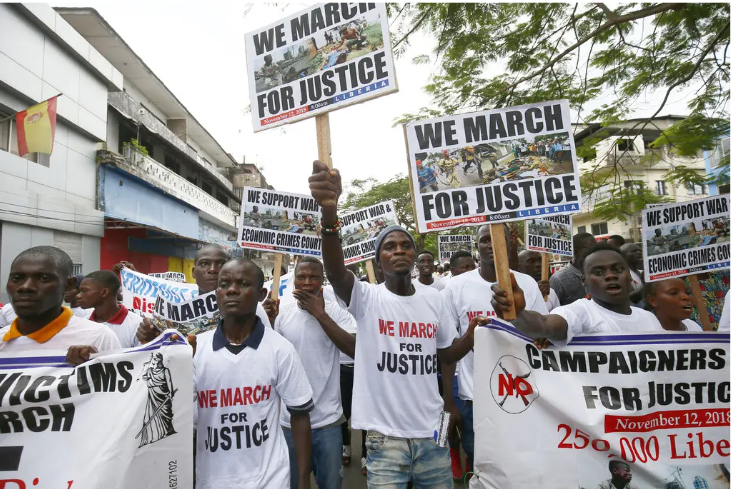Kidnap for ransom has become a burgeoning shadow industry operating across all regions in Nigeria. Abduction has become a business model, preying on the country’s wealthy elite, school children, and everyone in between. The kidnappers, sometimes termed “bandits” or “gunmen” in Nigeria, are a disparate group of disgruntled individuals, hardened criminals, and even insurgents. This illicit trade thrives on a complex web of negotiations, often ending in tragedy.
The negotiation dance begins with a chilling call. Proof of life (which used to be the norm but is now difficult to extract from the kidnappers), a whimper or a forced greeting from the captive shatters the victim’s family’s world. Ransom demands follow exorbitant figures, often exceeding some family’s yearly salaries. Negotiations are shrouded in secrecy. Fearing security forces’ incompetence, connivance or other failures endangering their loved ones, families usually operate outside the law. Mediators emerge, middlemen with connections to the kidnappers, leveraging their “influence” for a hefty cut. The process is agonisingly slow, a psychological game where raising the ransom is a gamble, and delays can be deadly but can also lead to reduced ransom.
This deadly calculus is a grim hallmark of Nigerian kidnappings. Frustration or a perceived lack of cooperation can lead to swift executions. The Al-Kadriyar case in January 2024 exemplifies this horrific trend. When ransom negotiations stalled, one of the five kidnapped sisters was tragically killed by the kidnappers. This continues to be the case in countless cases across Nigeria, driving families and loved ones to quickly come up with outrageous ransom amounts by any means necessary, sometimes through public crowdfunding, as was the case in the Al-Kadriyar kidnap or selling off family assets such as land, cars, electronics or even borrowing to have their loved ones released.
Several factors contribute to this violent streak. The kidnappers may be fuelled by desperation, seeking a quick payout to fund their operations or sustain themselves. Additionally, the easy availability of firearms in Nigeria lowers the threshold for violence and emboldens kidnappers. Firearms allow them to overpower victims, intimidate families into paying ransoms, and potentially fight off security forces. This makes kidnapping a more lucrative and less risky crime, contributing to its rise.
High unemployment, particularly amongst youth, creates fertile ground for criminal recruitment. Gangs may offer a perverse sense of income and power, preying on desperation. Furthermore, weak governance and widespread corruption create a security vacuum. Law enforcement is often under-resourced and poorly equipped, hindering proactive measures and emboldening kidnappers. Additionally, a culture of impunity allows perpetrators to operate confidently, knowing they’re unlikely to face swift justice. The unfortunate “success” of past kidnappings incentivises further crime. News of ransoms paid creates a warped economic model, attracting copycat criminals and normalising the abhorrent practice. This cycle of abduction and payout fuels the problem, making it even more dangerous for Nigerians.
The government’s response is a mixed bag. While the National Assembly amended the Terrorism Act 2011 to criminalise ransom payments, its effectiveness is questionable. In January 2024, the former minister for Communication and Digital Economy, Isa Ali Pantami, disclosed to his social media followers that his friend had offered to contribute 50 million naira as part of a social media crowdfunding campaign to release the Al-Kadriyar family. Not only is this a public flouting of the existing law, but it was carried out by a member of the government who passed the law. This act exposes the level of distrust in the system by the very drivers of the system, as well as the extent to which the Nigerian public is willing to go to save a life.
Law enforcement, often under-resourced and stretched thin, struggles to mirror this national attitude to life preservation in combating kidnappings proactively. In some cases, the security agencies claim responsibility when kidnap victims are released. In contrast, the victims vehemently insist that ransom was paid, further eroding trust in the Nigerian authorities. This lack of faith in the authorities pushes families towards the difficult path of self-preservation, negotiating with the very criminals who threaten their loved ones.
However, more recently, the Nigerian authorities scored a significant win following the rescue of 137 abducted Kuriga school children aged between eight and fifteen years. On March 24, 2024, the military, working with local authorities and government agencies across the country, in a coordinated search and rescue operation, rescued the hostages in Zamfara State. This rescue mission presented a much-needed victory for the Nigerian population in the fight against kidnap and insecurity. However, the trust deficit and the entire governance challenge in the country, especially government transparency to citizens, has called into question the authenticity of the rescue mission, with whispers of ransom payments. If there was a rescue, was the operation that tactical that none of the kidnappers was captured or neutralised? The secrecy, rather than building Nigerians’ confidence in the security forces’ ability, raises more questions.
Breaking the cycle of ransom kidnappings in Nigeria requires a multi-pronged approach. Improved security measures, particularly in vulnerable regions, are crucial. Dismantling the networks that facilitate kidnappings, the middlemen, informants, and arms suppliers must be a priority. However, the most critical element is fostering trust in law enforcement. Only when families believe the authorities can effectively secure the release of victims will the ransom spigot truly be shut off. Nigeria’s kidnapping epidemic is a complex issue demanding a nuanced solution. Until these multifaceted challenges are addressed, the prospect of a ransom-free future seems a distant hope.



